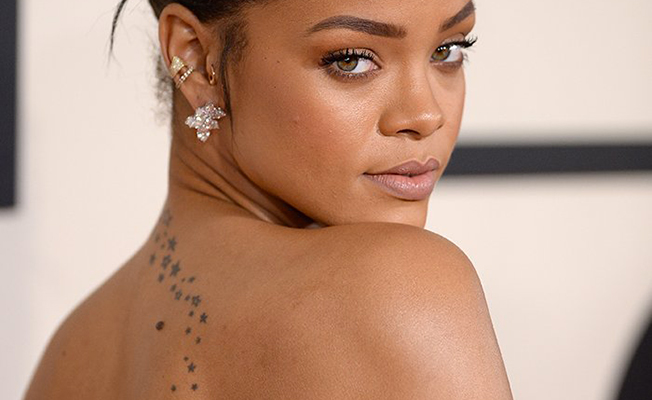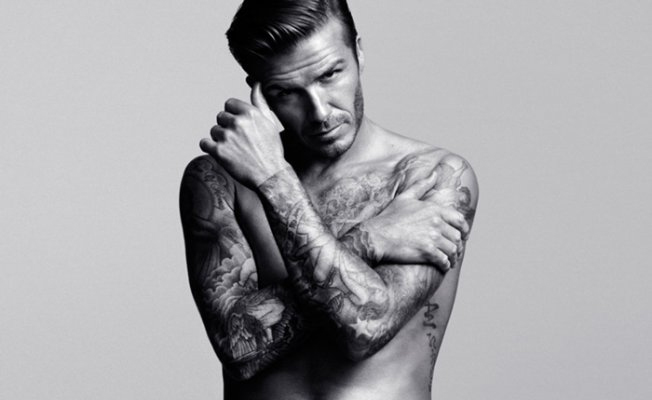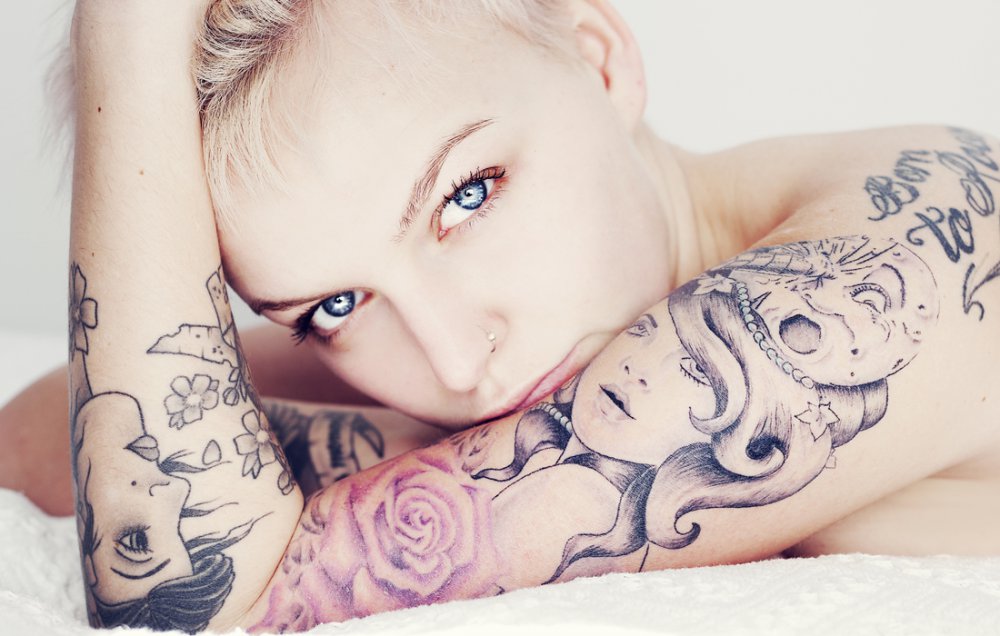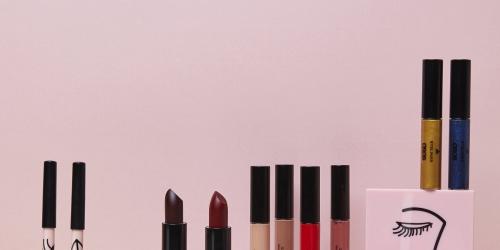The history of tattooing, a millennial practice
What is the common point between Angelina Jolie , star 2.0, and Otzi, hunter of the Neolithic (5 300 BC)? Their tattoos: Otzi, who was discovered mummified in 1991, collected about sixty crosses and dashes on his body when Lara Croft's interpreter only had eighteen. Our time is rediscovering a millennial practice that colonization and the Church have done everything to demonize. Religion has receded, and tattooing has resumed its place in today's mythology, that of body and appearance.
For Jérôme Pierrat, writer and editor-in-chief of "Tattoo Magazine", it is the Civilization that buried the tattoo. Among the first peoples of the South Pacific archipelagos (Samoa, Tonga, Marquesas Islands, New Zealand), corporal marking is a sacred rite, dedicating social belonging and integration to the group. With the exception of Samoa and New Zealand, Christian missionaries will proscribe this practice in the nineteenth century, as they banned surfing. From antiquity to the 1940s, the tattoo will remain in Europe a mark of infamy: a "M" inked on the front of beggars sentenced to prison, a fleur-de-lis as a wrist tattoo for prostitutes or the shoulder of fugitive slaves in the colonies, a number in the hollow of the Jewish, homosexual, communist and Gypsy arms in the death camps.

Rihanna Grammy Awards 2015 (c) getty
Tattoo as a social marker
Visible to all, tattooing places the wearer in the eyes of the social body. The marginalized will seize the sign of the opprobrium, "ironical nose to the society to found their own legitimacy", explains the anthropologist David Le Breton, author of "Signs of identity" (Métailié edition) . Truands, sailors, workmen, prostitutes, lesbians, but also members of the aristocracy will challenge morality, the ink on the skin. As long as you live on the margins, whether privileged or disadvantaged, you have to assume as much. In the 60s, rockers and bikers resort to the "tattoo" by wanting to stand out and sign their membership in a tribe breaking with society. With skulls and swastikas tattooed on the body, the Hells Angels display their challenge out of any aesthetic approach. Punks and skinheads , anxious to cultivate their bad reputation, will resume all these codes in the 70s.
In the 80s and 90s, tattooing as a sign of rallying dissent lasted a long time. The ancestral practice of inking out of his virile capsule, popular and deviant, to spread widely in the middle class. Polynesian surfers display their ideal of freedom, dream bodies inked tribal patterns, soon followed by wave hunters from around the world, and riders a summer on the Basque coast. The tattoo (re) becomes adornment and accessory of seduction mainstream and unisex .
So much so that the musée du Quai Branly devotes an exhibition to him in 2015 "Tatoueurs, tattooed" whose tattoo artist Tin-Tin is the artistic advisor. The star of Parisian pros, scorer of stars and president of the National Union of Tattoo Artists, sees this democratization a good eye: "We will not complain, we fought enough for." But this banalization is clearing its purest customers. Thirty years ago, only fifteen or twenty tattoo artists worked in France, mainly in the harbors and hot spots of the big cities. They are now four thousand, having their homes.

(C) abaca
Tattoo, the body has the word
"The depth of the skin is inexhaustible at making identity," says David Le Breton. Being tattooed has become so widespread that one almost forgets that marking one's body indelibly is not trivial. For the anthropologist, it is in the definitive character of the tattoo that the keys to its success must be sought.
We live in this world characterized by obsolescence: the conjugal, family bond, becomes precarious, the professional bond also. The only thing we have left is our body . We are sure to grow old with him , while we are far from knowing if we are going to end our days with the person we love. The body becomes our only place of certainty, the place of our sovereignty. By tinkering with it, you feel that you are touching something in your life.
This body given to us, we can starve, force-feed, transform, control, dominate or neglect. We can change its contours, its kind ... "In our postmodern society, it is this cohabitation of a multitude of bodily forms that satisfies our need for strange and savagery" , writes Gilles Boëtsch in the collective work " The skin, stake of society "(CNRS ed.). We are free to choose what we say about ourselves with our skin. And the tattoo, modification as well as assertion of oneself, is a speech. A psychology that determines the search for tattoo idea.
A "fake" identity for the historical adepts, who see in the chain tattoo boom the symptom of a consumerist frenzy devoid of meaning. Yet, the pain experienced when the electric needle pierces your skin really does not matter. As if to pay their tribute to the community of "real", the new tattooed evoke the test with stars in their eyes: "It hurts, but it's good, almost addictive," says Maia, who exhibits along his leg a large frieze of flowers and birds. A pure pleasure, compared to the test imposed by the singer Rihanna : to be inked in New Zealand, according to the traditional Maori method, the Ta moko, which uses a mallet and a point to incorporate the pigments. A way, for the singer of R'n'B to forty-six million albums sold, to give meaning to a misguided practice?

(C) David Beckham for h & m
Tattoo as a sign of freedom
As David Le Breton points out, it is no coincidence that prisoners are tattooed: their bodies are the only place the prison administration does not have. But we who can move freely are also subject to a series of laws and codes that govern our behavior: decide to put a motif on his body, choose which part to ink, is experienced by many as an act of freedom. "A very controlled freedom , " says the anthropologist. Nevertheless, the tattoos signs of infinity, stars, dolphins and swallows bloom our shoulders, our ankles, and we are sure to be the only ones to have this tattoo there at this place.
In a society of the show, the look, the image, our appearance allows us to be immediately identified, recognized. Tattooing is a staging of oneself in the great theater of social life
continues the researcher.
But finally, he has always been: the navy guy who, in the 50s, wore tattoo anchor and vahine on his forearms and biceps, said the baroud at sea and virility. His loves, too. Are we so far from this sailor when we engrave on our bodies the name of a loved one or a symbol that makes sense only to our eyes, at a particular moment in our lives? An autofiction, a personal mythology, way of saying, in an ultra-competitive society: "I" is not another. " And also a way to enter the competition, on the " big market to the good girl "looks like Virginie Despentes. the appearance, in the 90s, tattoos and piercings on the bodies of porn actresses have done that maintaining the traditional character of this attribute sulfur.

(c) bedya / istockphotos
The tattoo, ultimate accessory?
Like a jewel of skin, the tattoo has become a symbol of luxury and glamor, like the porno chic was in the 2000s "There is a resurgence of the tattoo among models, confirms Lena, booker at Elite. The discreet tattoos that will never stop a girl from working. " Even will become an asset. By displaying, on the cover of "Lui", the two swallows tattooed by the painter Lucian Freud at the bottom of her back, Kate Moss officially makes her chic and sexy stripes gain body art. And propels the ink drawing into a work of art.
Definitively out of the ghetto, the tattoo once reserved for bad boys is all the rage among the it-girls. With a certain shift of meaning. For tattooed, true, the principle of eternity is inherent in tattooing. Today, the consultations of the cabinets to erase a tattoo do not fill up, in spite of the cost and the duration of the erasure sessions. At the Sorbonne Laser Center in Paris, approximately 1,000 de-tattooing operations are performed each year, many of them only a few days after inking. Some patterns, especially those made with orange or red inks , are long to erase and do not disappear completely. The memory of the skin is stronger than our instability.
"It's not like putting paint on a canvas," Tin-Tin warns , " a canvas does not hurt, it does not have microbes, we do not make holes in it." A good professional must know how to take precautions with the human body. " The star of tattoos looks with consternation innovations: erasable ink (InfinitInk) in the United States, white ink tattoo, ephemeral tattoo launched by cosmetics brands. The scandal and revolt recycled in the blender of mass marketing ... We are witnessing the emergence of an absolute contradiction: the false-true tattoo.
In season 2 of the television series " House of Cards ", Senator Jackie Sharp will be tattooed on the flank in all discretion. Only her lover has access to this part of herself. At the height of social integration, this unyielding politician gets out of trouble. And if the subversive dimension of the tattoo took all its meaning when it is removed from the eyes of the all-comer?


